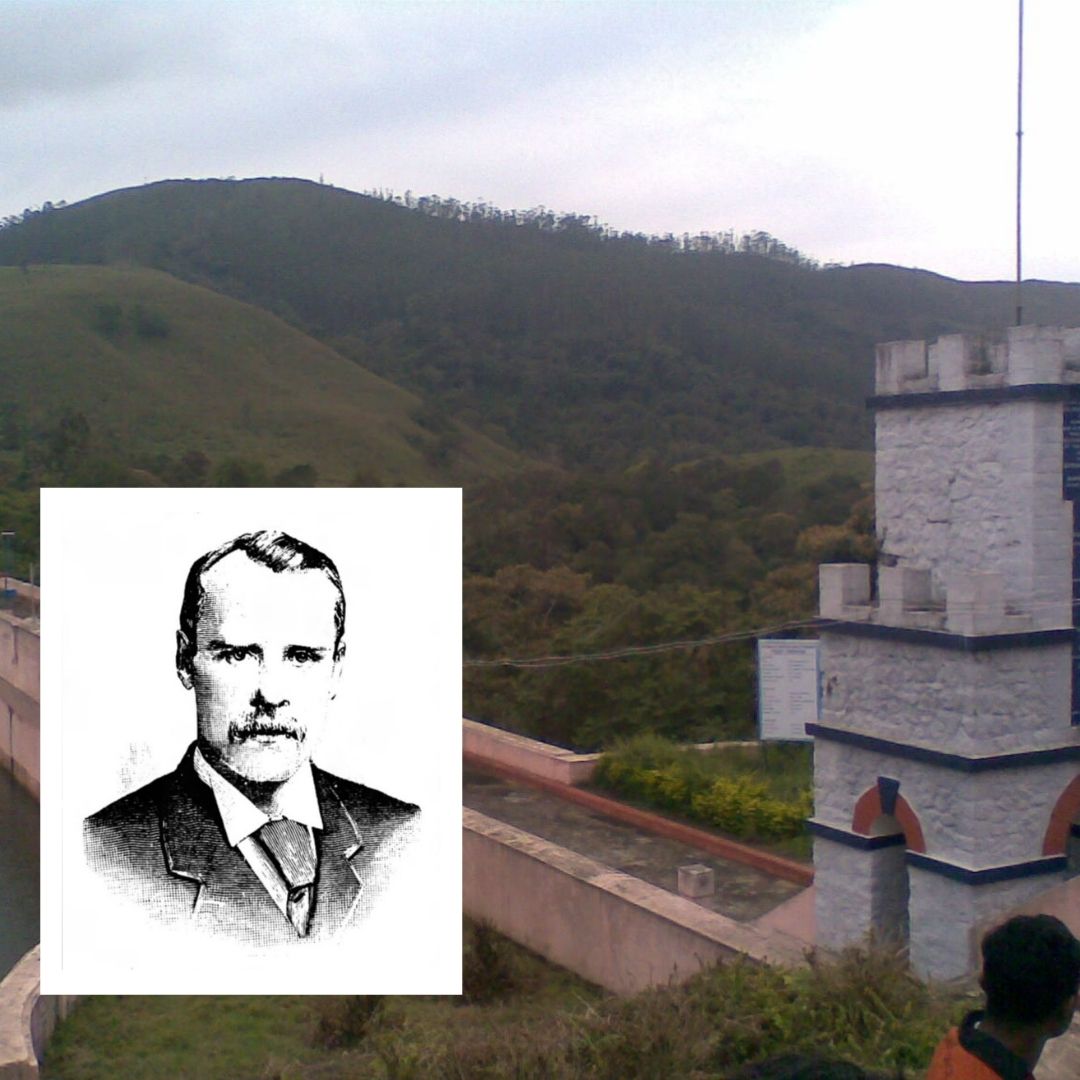
Image Credits: Wikipedia, Wikipedia
Mullaperiyar Dam: How This British Engineer Built A Lifeline For Farmers Of Tamil Nadu
Writer: Akanksha Saxena
I am a budding journalist who loves to write stories that have the ability to connect with people.
Tamil Nadu, 25 Oct 2021 12:28 PM GMT
Editor : Ankita Singh |
A literature lover who likes delving deeper into a wide range of societal issues and expresses her opinions about the same. Keeps looking for best-read recommendations while enjoying her coffee and tea.
Creatives : Akanksha Saxena
I am a budding journalist who loves to write stories that have the ability to connect with people.
Built by the British Army engineer 126 years ago, the dam has been the bone of contention between Tamil Nadu and Kerala. However, a United Nations report states that there are major issues with the construction that may result in a possible dam-break.
The Mullaperiyar Dam has been the bone of contention between Tamil Nadu and Kerala. The 126-year-old establishment has been a boon for farmers in Tamil Nadu as the water is diverted to the state's Dindigul district for agricultural purposes. It is built on the confluence of the Periyar river and its tributary, Mullayar river. The dam is situated on the Cardamom Hills on the Western Ghats.
This particular dam has been in the news for quite some time now. While this has been the subject of legal battle between the two Southern states, a United Nations (UN) report states that it is on the brink of breaking, that could take several lives living nearby. Here's a little sneak peek into the controversial barrage's long-drawn history.
The 999 Year Long Lease
A major part of the dam, including the catchment area, is situated in Kerala's Idukki district. In 1789, a minister named Pradani Muthirulappa Pillai came up with the idea of diverting Periyar's westward flowing water towards the neighbouring state, Tamil Nadu, into the Vaigai river. It was then when the dam's location was scouted by Captain J.L Caldwell, who was a part of the 'Madras Engineers' that is informally known as the Madras Snappers.
After years of going back and forth, the construction of the Mullaperiyar Dam was finally approved in 1882. A man named Major John Pennycuick was the man behind constructing this and he is very well-known in both the states even today. On October 29, 1886, a lease indenture was signed between Maharaja of Travancore (Visakham Thirunal Rama Varma) and the British India's Secretary of State for 999 years. This was signed after 24 years of negotiation between the two parties.
It all changed when India attained independence in 1947. Almost ten years after this, Kerala became a state after which they declared the agreement as null and void. The lease renewed only in 1970 with C Achutha Menon as Kerala's Chief Minister. For 50 years now, Tamil Nadu has been paying ₹2.5 lakhs as tax to the Kerala government per year for using the land as well as ₹7.5 lakhs as a surcharge for the electricity produced. Even today, the contract is disputed between the two states.
Major John Pennycuick's Contribution
The construction began in 1887. According to Wikipedia, the dam was built with limestone and burnt brick powder that is known as 'Surkhi.' The river's diversion was the greatest challenge faced by Pennycuick. The temporary embankments used to restrain the water flow were destroyed due to frequent rains and floods. Due to this problem, the British authorities put a hold on the funds for the dam.
Then, Major Pennycuick sold his wife's jewellery in order to keep the work on the dam going. It creates a reservoir in Periyar river's gorge through which the water flows westward. Eventually, it flows into a ravine on the Vaigai river situated in Tamil Nadu, passing through districts such as Dindigul, Theni, Madurai, Sivaganga.
Even today, Major Pennycuick is remembered for his work on the dam. His statue has been installed at the state PWD office in Madurai. His photographs have found their place in people's houses. His great-grandson was honoured in the city in 2002 and the event was attended by thousands of people looking forward to see him.
Dam 'Outlived Its Life'
While the Mullaperiyar dam holds historical significance for both states, its structural foundations are extremely questionable. As reported by The Times of India, a United Nations (UN) research vertical called 'United Nations University' raised an alarm about the dam's location being in a 'seismically active area' that proves to be extremely detrimental for the people living nearby. The report stated that the ageing of large dams is a major matter of concern. The people living in the state's Idukki district experienced several tremors in July 2011. While their intensity was not life-threatening, its impact was seen when the dam's water rose up to 136 ft. This is considered to be higher than its actual capacity.
"One of the primary technical issues has been the safety of the people living in Kerala, downstream of the dam. The safety concerns are built on the fact that the dam has outlived its life and that it was built with old technology. Adding to these, apprehensions of the resident population were the instances of leaks observed in the dam. If the dam collapses, it would wash away a stretch of about 25 km between Mullaperiyar and Idukki dams affecting about 0.1 million people," said the report.
 All section
All section














